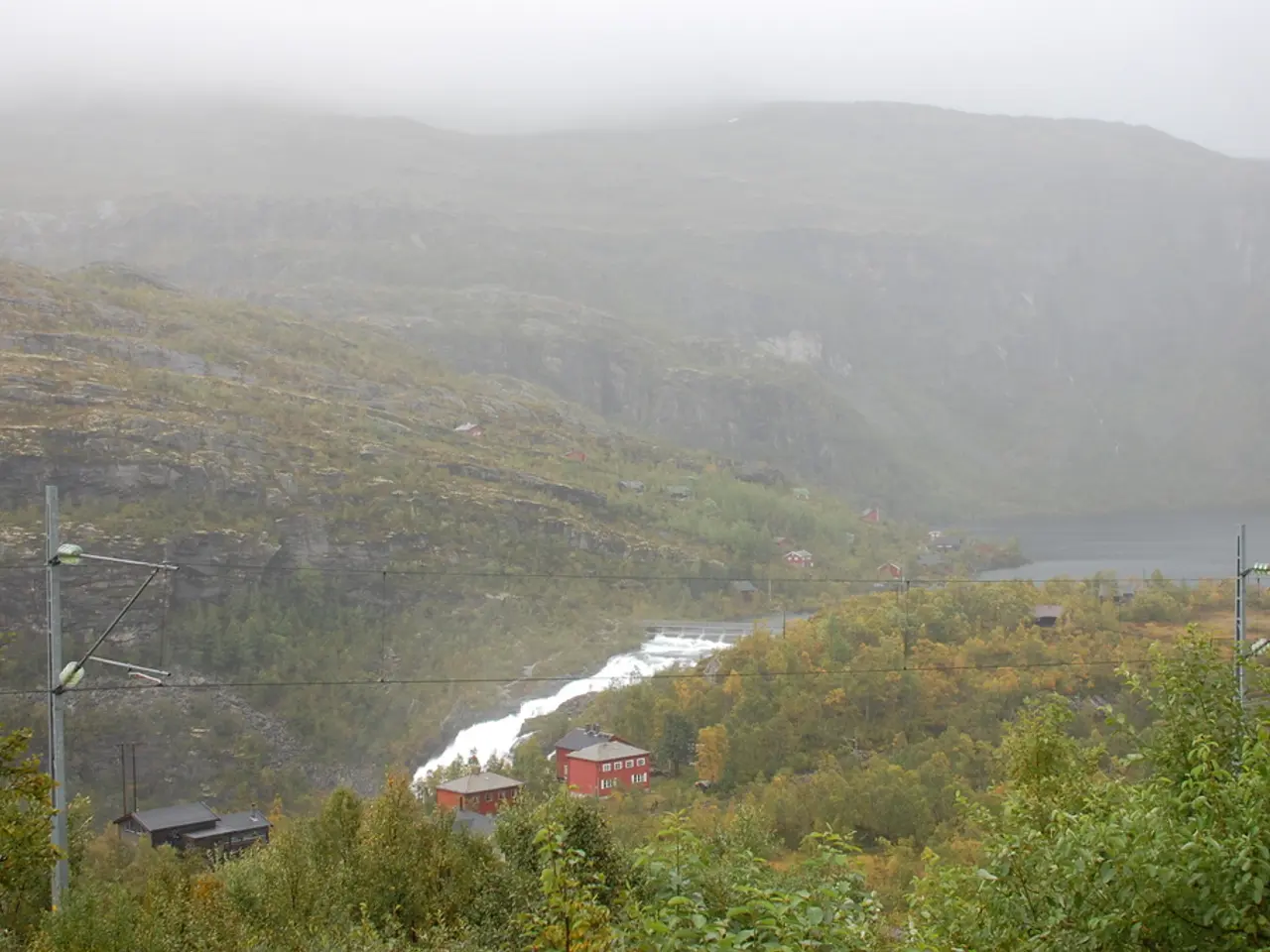Energy Generation Along Electricity Transmission Lines via Solar Power
In an era where renewable energy is becoming increasingly important, a new approach is gaining attention: installing solar panels under power lines. This innovative solution has the potential to optimize land use and integrate renewables more effectively, but it also comes with its own set of challenges.
The Controversy
The installation of solar panels under power lines is not without controversy. Safety, reliability, and land use concerns are primary issues, despite potential benefits such as utilizing otherwise unused land and improving renewable energy generation capacity.
Safety risks are a significant concern, as power lines carry high-voltage electricity, posing hazards during installation, maintenance, or in case of faults. There is a risk of electrical accidents both for workers and equipment under or near energized lines.
Interference with utility infrastructure is another challenge. Installing solar panels beneath power lines may complicate access for maintenance or emergency repairs on the lines, potentially impacting grid reliability.
Regulatory and permitting hurdles also loom large. Projects near power lines often face stringent regulations and delays due to safety standards, rights of way, and coordination with utility companies.
Community opposition is another factor. Some local residents might oppose solar installations under power lines due to perceived safety, aesthetic, or property value concerns, leading to protests and revisions of project plans.
The Benefits
Despite these challenges, the benefits of installing solar panels under power lines are compelling. Efficient land use is one such benefit, as areas under power lines are often unsuitable for housing or agriculture but can be used for solar farms, thus maximizing land resources without competing with other land uses.
Support for grid integration is another advantage. Placing solar beneath or near power lines can allow easier interconnection to the electrical grid, reducing transmission losses and infrastructure costs.
Renewable energy expansion is a key benefit as well. This approach facilitates renewable energy deployment in areas that might otherwise be underutilized, helping meet clean energy goals.
The Maryland Pilot Project
In Maryland, a pilot project to install solar panels under power lines has been approved. The project, managed by Earth Sky, an NGO dedicated to renewable energies, aims to determine if the magnetic fields of high-voltage lines affect solar energy production and if the presence of solar panels affects the maintenance of power lines.
The project will involve three carts, each with four solar panels, installed at different locations near high-voltage power lines. If successful, the pilot project could prevent the dedication of agricultural land or forest clearance for solar parks.
The Future of Solar Under Power Lines
If the pilot project proves successful, it could pave the way for wider adoption of solar panels under power lines. According to John Farrell, who conducted the only evaluation of the potential electricity generation of this approach in 2011, if solar panels were installed everywhere under power lines with reserved corridors, the United States could generate 720 terawatt-hours (TWh) per year.
However, there are still challenges to overcome, such as the accumulation of ice on solar panels from power lines in northern regions. A supplementary pilot project could evaluate the possibility of having a second line using the same pylons, with a lower voltage, to mitigate this issue.
As the global production of solar energy is set to surpass nuclear power this summer, the potential for solar energy under power lines is an exciting development in the renewable energy sector. With careful handling of safety, regulatory, and community challenges, this innovative approach could provide a strategic way to optimize land and integrate renewables, helping us meet our clean energy goals.
References
- [Source 1]
- [Source 2]
- [Reuters]
- [Canadian Renewable Energy Association]
- [University of Texas at Austin]
- Despite concerns about safety, interference with utility infrastructure, and regulatory barriers, the approach of installing solar panels under power lines offers benefits such as efficient land use, grid support, and renewable energy expansion.
- A pilot project in Maryland, managed by Earth Sky, aims to determine if the magnetic fields of high-voltage lines affect solar energy production and if the presence of solar panels affects power line maintenance.
- If successful, the widespread adoption of this approach could generate 720 terawatt-hours (TWh) of electricity annually in the United States, according to John Farrell's 2011 evaluation.
- Another challenge to overcome is the accumulation of ice on solar panels from power lines in northern regions, which could potentially be mitigated by a supplementary pilot project featuring a second line with a lower voltage.




